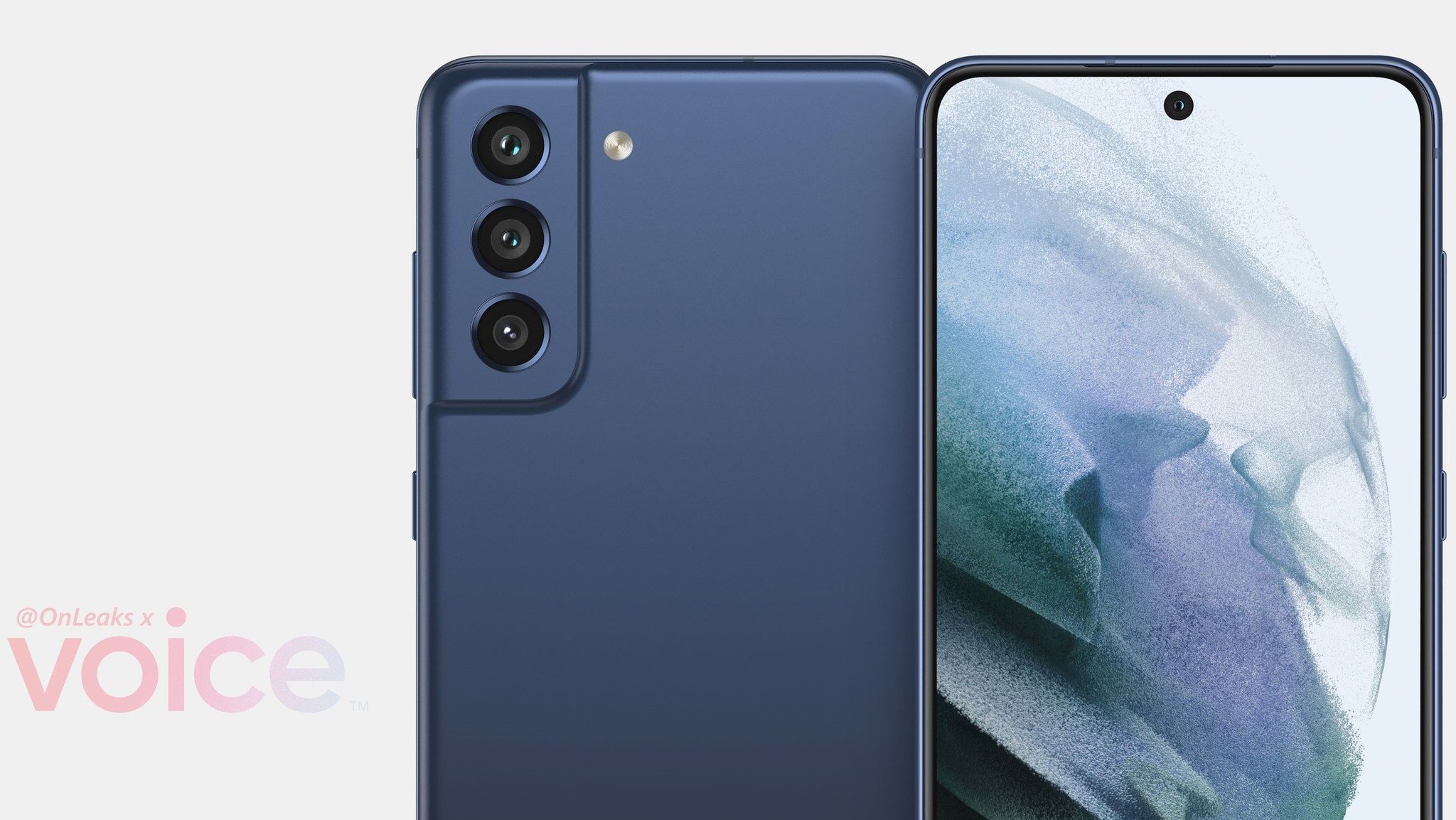OnePlus 9 Pro review - Nailed it - Android
OnePlus finally has cameras that measure up to the best that Samsung, Xiaomi, and Google have to offer.
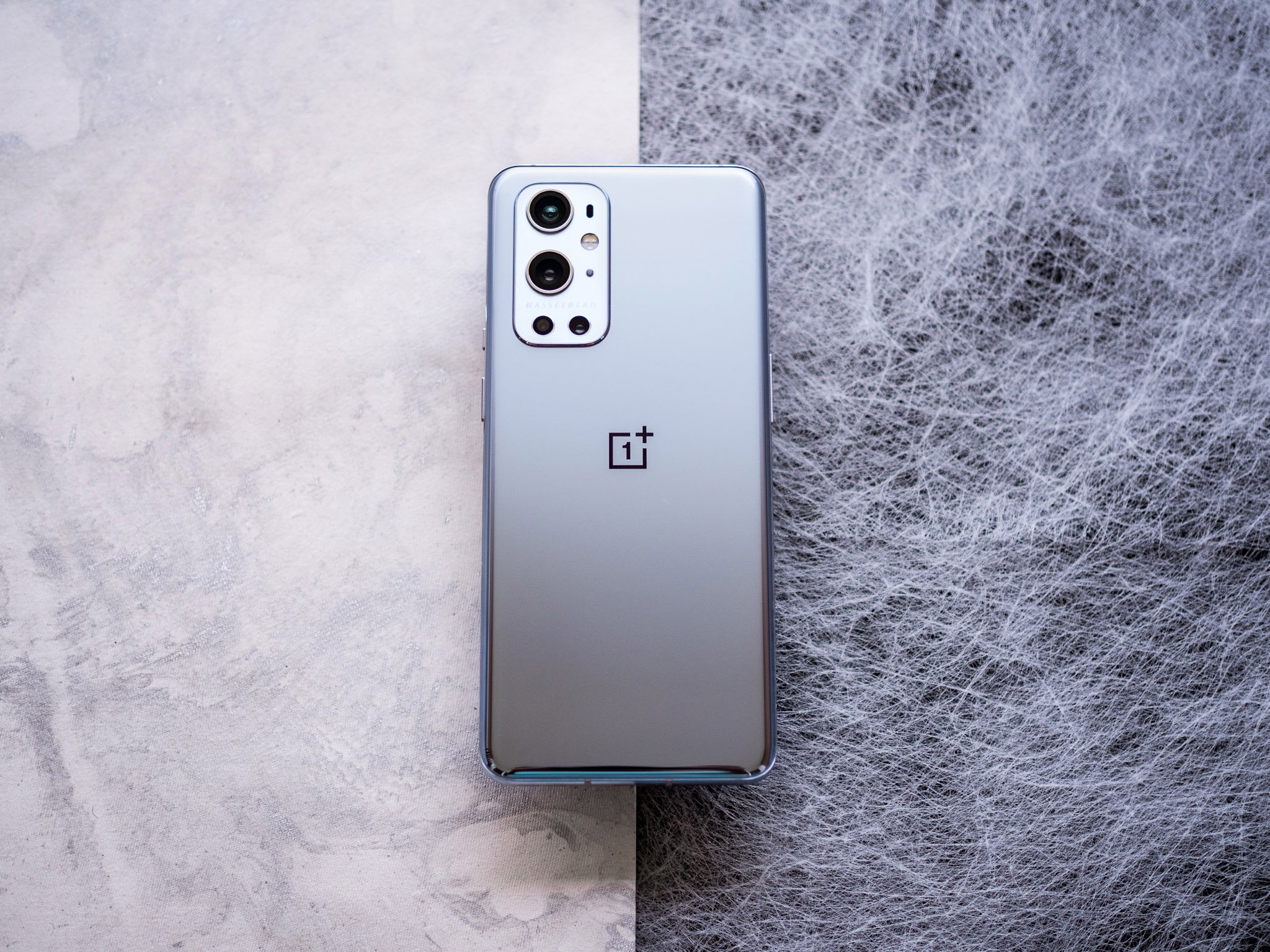
OnePlus made its foray into the high-end category two years ago with the OnePlus 7 Pro. The device went toe-to-toe with the best Android phones, and while OnePlus nailed the hardware side of things, the camera was a letdown.
That was the case last year with the OnePlus 8 Pro as well. OnePlus made huge strides in key areas, delivering a QHD+ AMOLED display with 120Hz refresh rate, 30W wireless charging, and IP68 dust and water resistance for the first time. But like its predecessor, the 8 Pro just did not measure up to its rivals in terms of the camera side of things.
The OnePlus 8 Pro launched during a period of reorganization for OnePlus. Facing flagging sales, the company turned its focus to the mid-range segment with the introduction of the Nord last year, and the bet seems to have paid off — OnePlus hit one million phones sales in a quarter for the first time in Q3 2020, and an overwhelming majority of that was down to the Nord.
Alongside an entry into the mid-range and budget segments, OnePlus overhauled its internal staffing with veterans from Samsung and HTC to lead key software initiatives, set up a camera lab to fix long-standing deficiencies, and started offering localized software features in OxygenOS. More recently, it promised to invest $150 million into its camera hardware and establish a long-term relationship with camera maker, Hasselblad. In short, the OnePlus of 2021 is unrecognizable to what it was in 2019.
The result of all these efforts is the OnePlus 9 Pro. The phone offers exciting upgrades in just about every area from its predecessor, but what you need to know first and foremost is that the cameras are finally great. A combination of new lenses and a partnership with Hasselblad over color tuning means you get a camera that holds its own against the best that Samsung, Google, Xiaomi, and others have to offer.
But these improvements come at a price. The OnePlus 9 Pro retails for $969, $70 more than what the 8 Pro debuted at last year. It's more drastic in India, where the 9 Pro comes in at ₹64,999 ($900) — a full 17% increase over the 8 Pro last year. So let's see what you get for that asking price, and whether you should consider the OnePlus 9 Pro if you're looking to upgrade to a 2021 flagship.
OnePlus 9 Pro review:
- Price and availability
- Design & display
- Hardware & performance
- Specs comparison: 9 Pro, 9, 9R
- Battery life
- Cameras
- Software
- The competition
- Should you buy?
- Update changelog
OnePlus 9 Pro
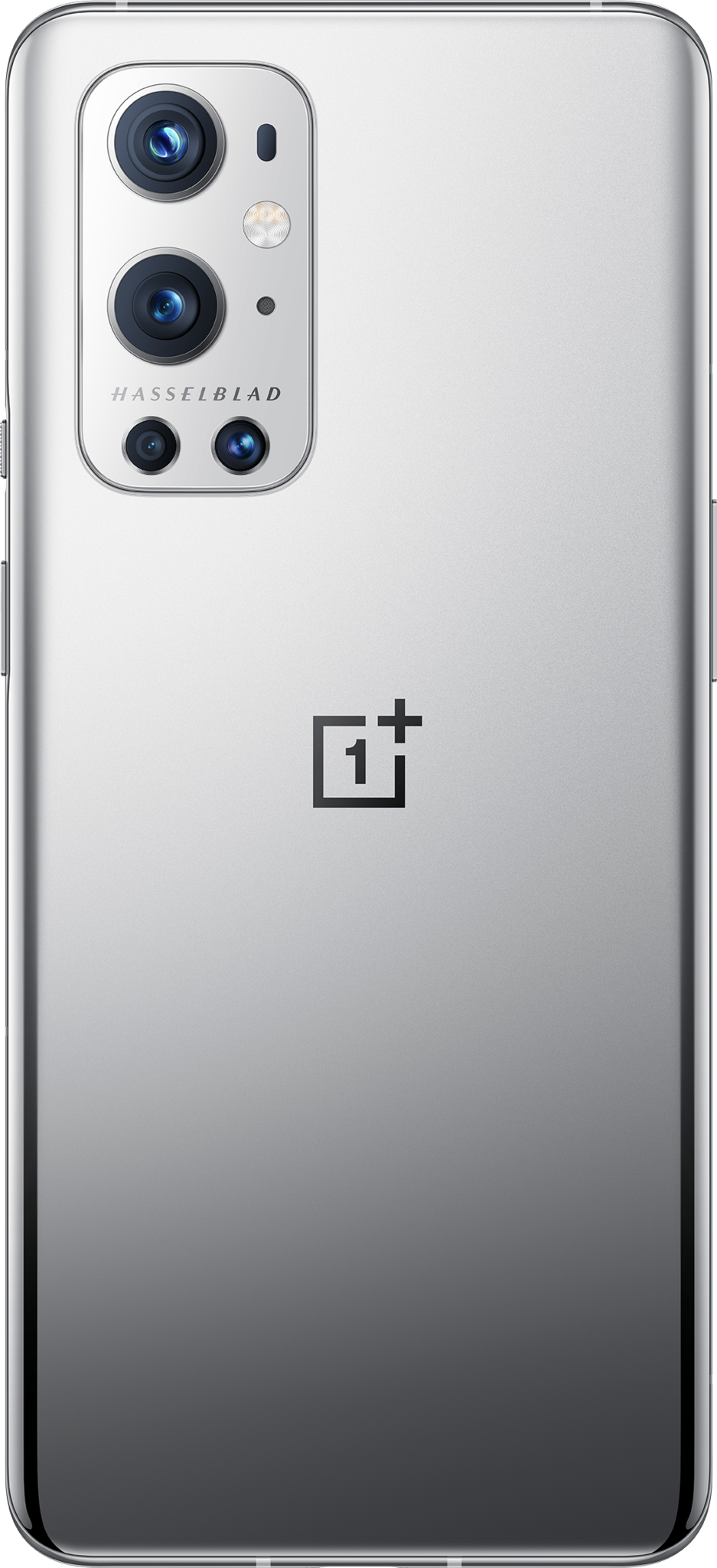
Bottom line: The OnePlus 9 Pro gets almost everything right. A smaller, more manageable body, stellar cameras, a big, bright, and stunning OLED display, unflappable performance, and subtle improvements to its design. But subpar battery life and 5G quibbles hold it back from perfection.
The Good
- Stellar cameras
- Gorgeous design
- 65W wired charging and 50W wireless charging
- Outstanding performance
- Sublime 120Hz AMOLED display
- IP68 dust and water resistance
The Bad
- Sub-par battery life
- 5G limited to T-Mobile & Verizon in the U.S.
- Software bugs at launch
$1069 at Best Buy $1069 at Amazon $1069 at OnePlus
About this review
This review was jointly written by Harish Jonnalagadda and Daniel Bader over the course of ten days.
Harish's phone was running OxygenOS 11.2.LE15DA out of the box and received a day-one update to 11.2.1.1.LE15DA, and spent his review period on Airtel's network in Hyderabad, India.
Daniel's phone was running OxygenoOS 11.2.LE15AA out of the box and received a day-one update to 11.2.1.1.LE15AA, and spent his review on the TELUS network in Toronto, Canada.
OnePlus 9 Pro: Price and availability
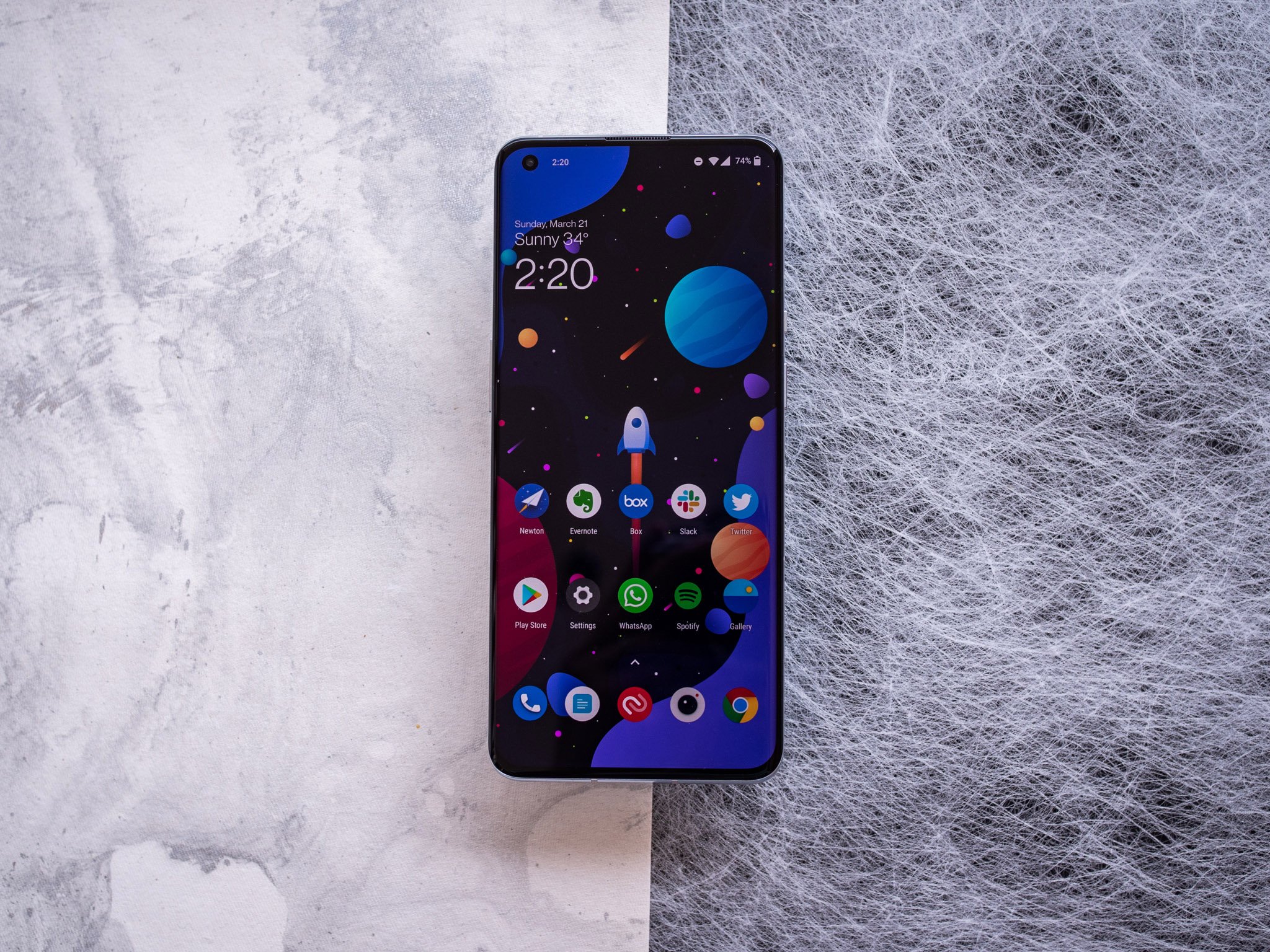
The OnePlus 9 Pro went on sale April 2 in North America, UK, Europe, and India. The base model comes with 8GB of RAM and 128GB of storage, and there's also a 12GB/256GB edition if you need additional storage.
Here's the breakdown of OnePlus 9 Pro pricing in various parts of the world:
- OnePlus 9 Pro (8GB/128GB): $969 USD / $1,349 CAD / £829 / ₹64,999
- OnePlus 9 Pro (12GB/256GB): $1,069 USD / $1,499 CAD / £929 / ₹69,999
As of the publication date, the $969 OnePlus 9 Pro is not available to purchase. OnePlus has said that it is working on filling inventory for the cheaper model, but there's no timing as to when it will become available. For now, if you want a OnePlus 9 Pro, you have to buy the more expensive $1069 version.
Unlike previous launches, the OnePlus 9 Pro isn't much more affordable in India over other global markets. It starts off at ₹64,999 ($900), a full 17% hike from what the 8 Pro debuted at last year. This is in spite of the Indian variant offering 5G connectivity in name only — it has just two Sub-6 bands.
The phone is sold in Morning Mist, Pine Green, and Stellar Black color variants. All three colors will be available in India, UK, and EU, but the Stellar Black color option isn't making its way to North America.
OnePlus had a lot of issues with availability last year, and we were told that it would not be the case with the OnePlus 9 series. Both the OnePlus 9 and 9 Pro should be available in adequate quantities in all color variants and launch markets. OnePlus also mentioned that it will continue to sell the OnePlus 8 and 8 Pro until current inventory runs out.
OnePlus 9 Pro: Design and display
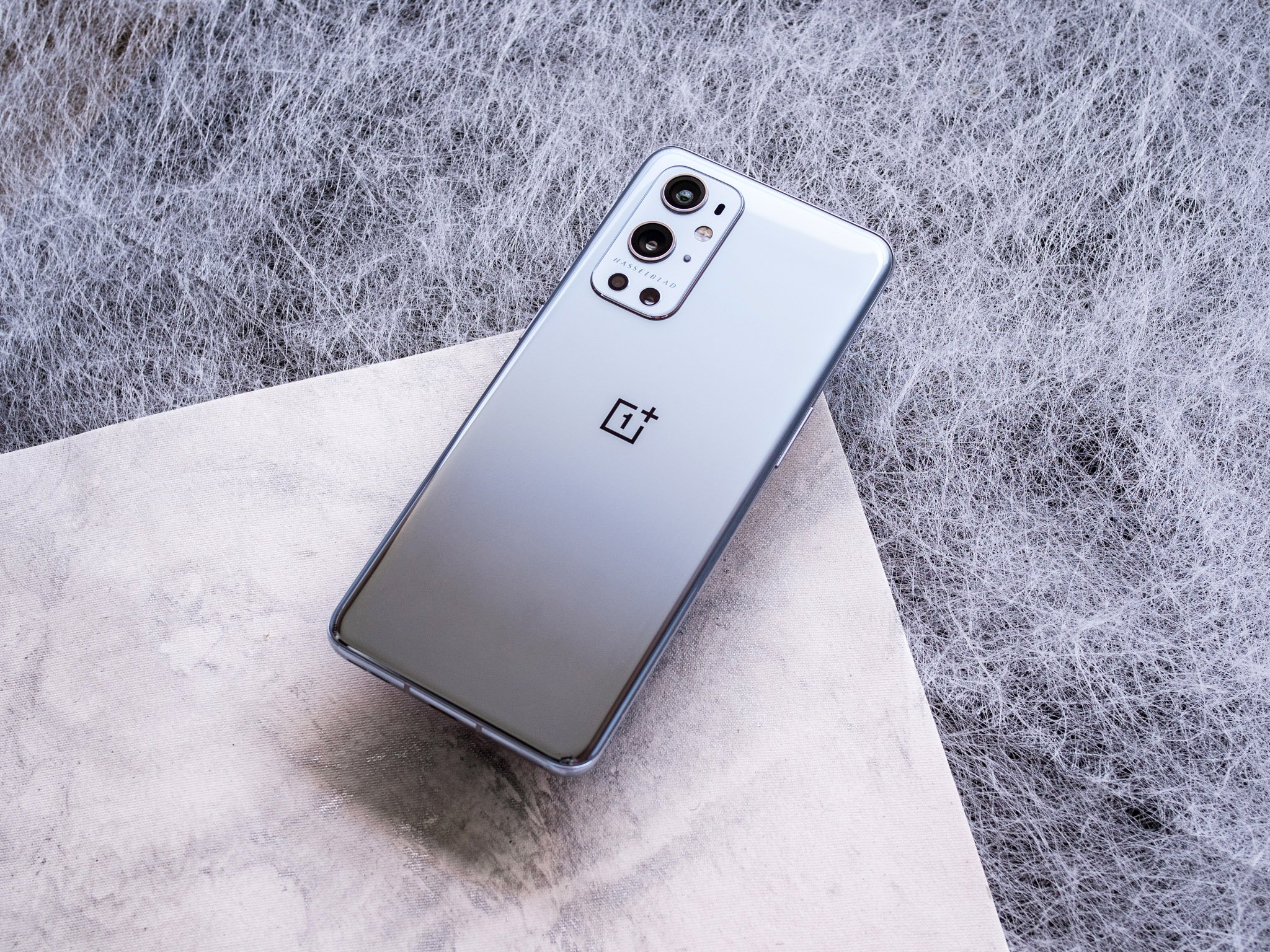
The OnePlus 9 Pro looks like a lot of phones out right now, but it comes together in all the right ways. I think, then, it's more important to compare the phone to OnePlus's previous devices to see how far the company's own approach to design has evolved. There's far more subtlety to the OnePlus line this year, both in terms of color and stand-out accents or highlights that draw your eye.
OnePlus' design language has evolved in 2021, and the 9 Pro looks downright gorgeous.
The phone's front is a dead ringer for the OPPO Find X3 Pro, with its left-oriented camera hole and ever-so-curved edges. The Gorilla Glass 5 meets the aluminum frame at a less severe angle than last year's OnePlus 8 Pro, which cuts down on errant touches on the side of the screen. The phone's buttons are where you'd expect to find them on a OnePlus phone — power button on the right side flanked by the mainstay alert slider which stays just as useful as ever. The left side holds the volume rocker, which is clicky as ever.
Around back, the Morning Mist model shines back at you, a brilliant mirror finish that shifts subtly between silver and black. (The Pine Green and Stellar Black variants have a matte finish instead, with the latter mimicking the feel of the Sandstone finish of the OnePlus One.) Then there's that camera stack that you've likely seen in a million renders by now. Firstly, it's located in the top left of the device, a location we saw utilized to great visual effect on the OnePlus 8T last year. Two big camera sensors grab the eye, tightly mobbed by a number of smaller sensors that build the best OnePlus camera experience we've seen to date.
The phone is pretty slippery, which makes a case that much more important. The company has fewer first-party options this time around, so you'll want to invest in one of the best OnePlus 9 Pro cases as soon as possible.
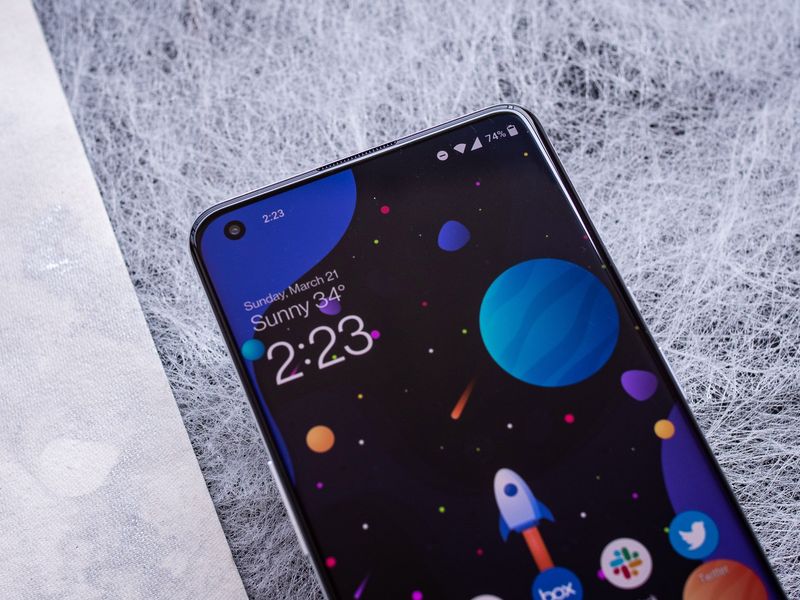
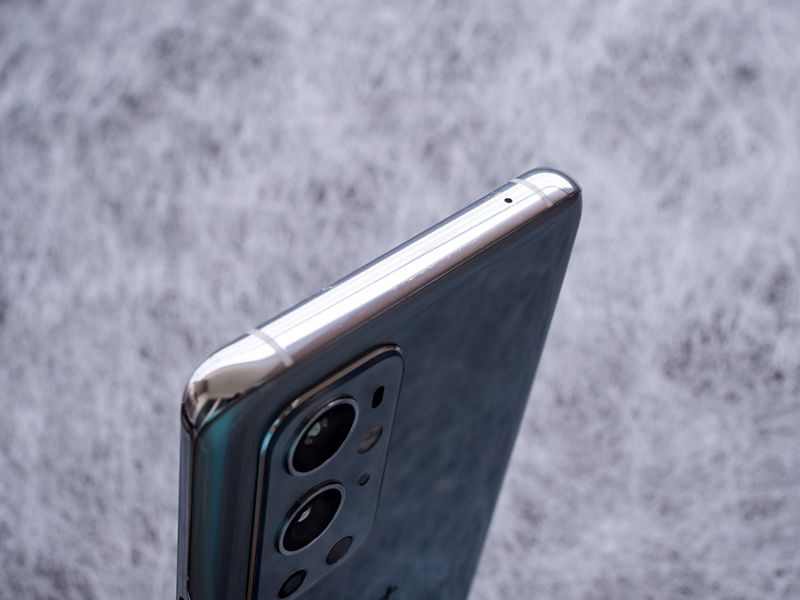
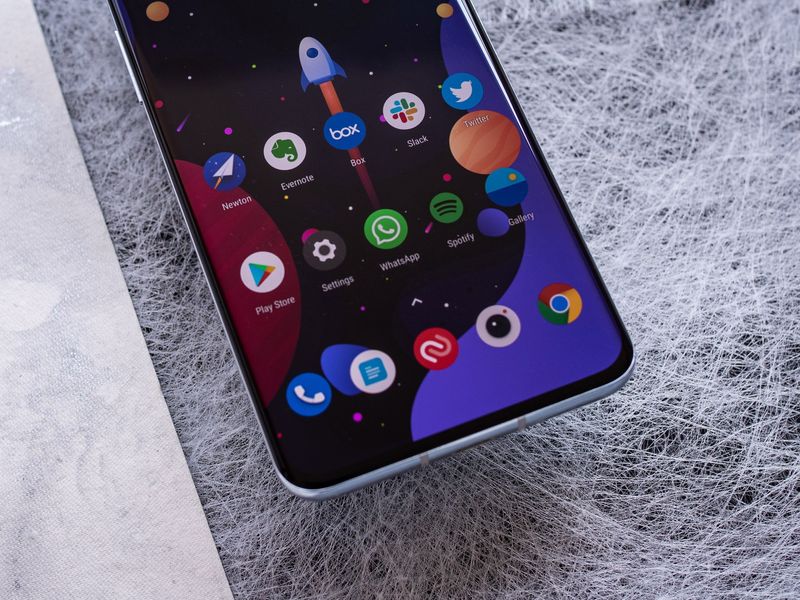
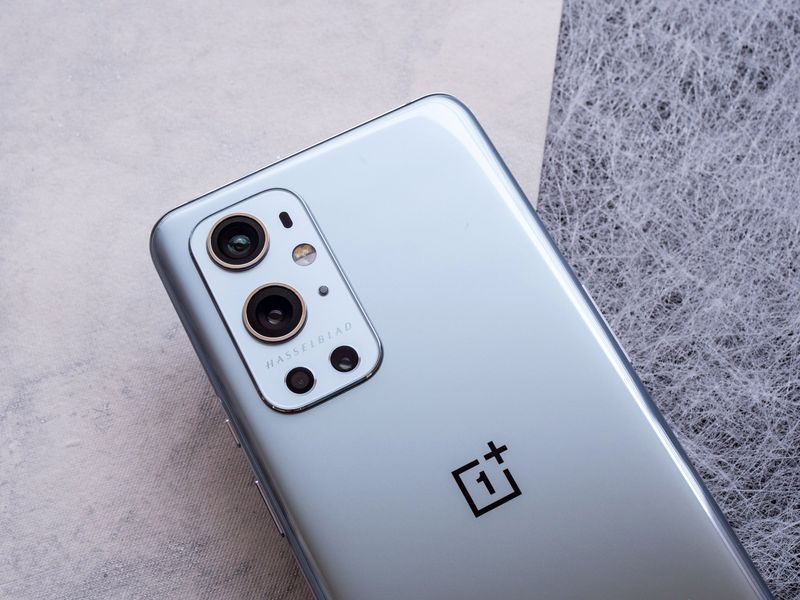
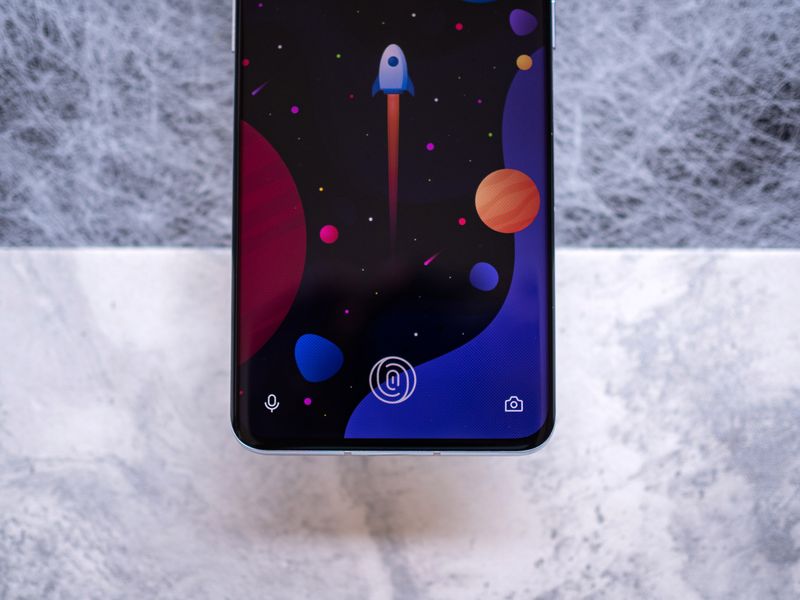
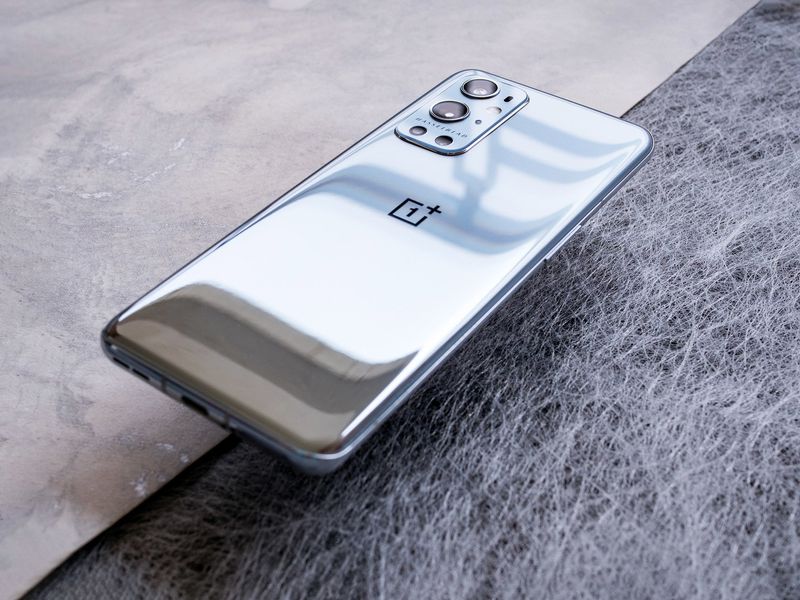
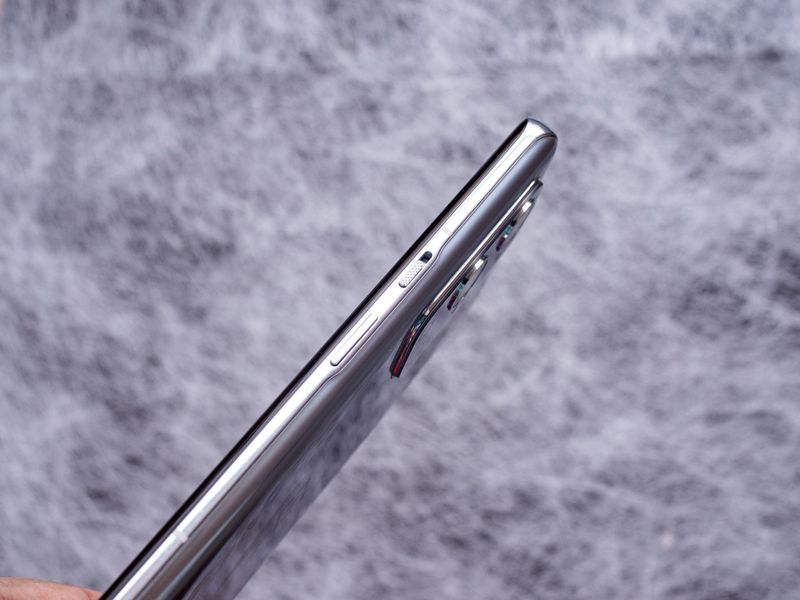
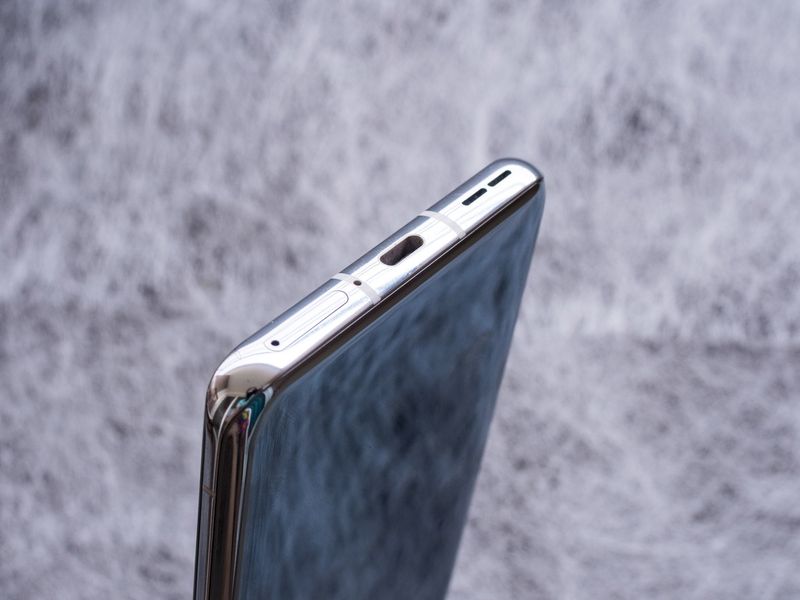

The phone's SIM card slot is located at the bottom next to the USB-C charging port, and while earlier OnePlus phones offered dual-SIM connectivity in all regions, that's changing in 2021. The North American version of the 9 Pro has a single-SIM slot, with other global variants getting dual-SIM connectivity.
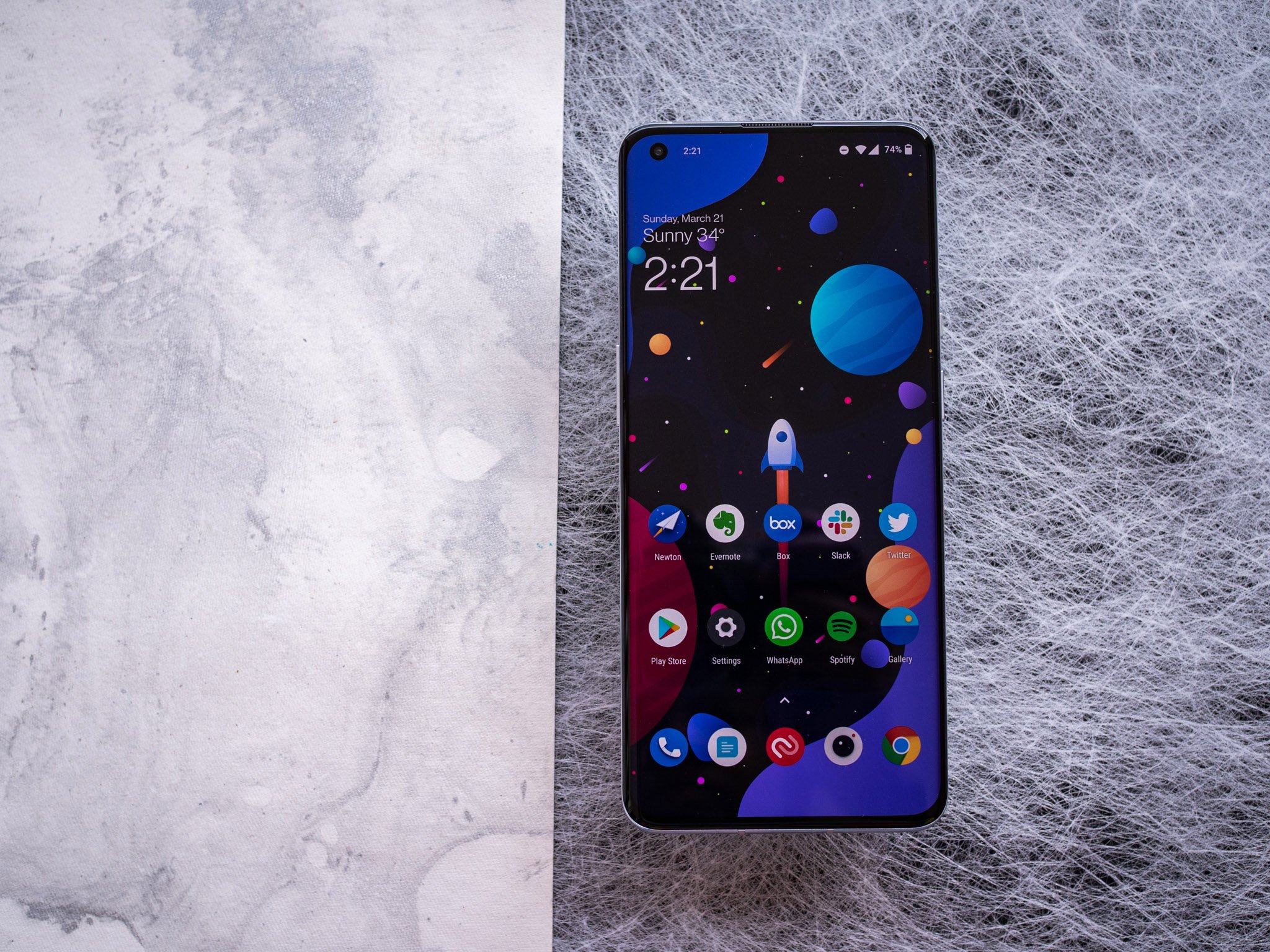
The OnePlus 9 Pro has a 6.7-inch AMOLED display with a QHD+ (3216 x 1440) resolution. OnePlus calls this Fluid Display 2.0, and the standout addition here is the LTPO (low-temperature polycrystalline oxide) tech. The tech allows the 9 Pro to dynamically switch the refresh rate based on the content that's shown on the screen. A key benefit of LTPO? The AOD analog clock now shows a seconds hand, and OnePlus notes this was only possible because of the new tech.
OnePlus isn't the first to roll out a phone with LTPO tech; Samsung introduced it last year on the Note 20 Ultra, and the S21 Ultra uses the same display tech to dynamically change the refresh rate from 11Hz to 120Hz. But the OnePlus 9 Pro is able to go all the way from 1Hz to 120Hz via the use of a custom controller.
This is one of the best displays you'll find on any phone today.
The display is one of the best you'll find on any phone today, offering excellent contrast levels, high brightness, and great viewing angles. The panel itself is curved like last year, but the curvature itself isn't as extreme, and as the chassis is marginally thicker, it isn't anywhere as unwieldy to use.
You also get stereo sound here, and like last year, the earpiece doubles up as the secondary speaker. The sound output isn't as rich as devices that have identical speakers in a true stereo configuration — like the Xiaomi Mi 11 — but it does make a difference when streaming videos or playing games.
On that note, OnePlus has an interesting new feature called Hyper Touch that increases touchscreen polling to 360Hz — it's usually 240Hz — to decrease input lag. The feature is limited to a select few games like Call of Duty Mobile, League of Legends, PUBG Mobile, and Brawl Stars for now, with more set to be added later.
Unfortunately, the actual touch experience with the OnePlus 9 Pro isn't always consistent. I (Daniel Bader) and a number of my peers in the industry have experienced edge detection issues while typing on the default Gboard keyboard, specifically when quickly tapping the ?123 button at the bottom left corner to activate the secondary keys. OnePlus has acknowledged the issue, but none of the updates since launch have fixed the problem.
OnePlus finally introduced always-on display (AOD) last year with OxygenOS 11, and the feature itself offers plenty of customization. OnePlus partnered with the Parsons School of Design over the Insight AOD, and it gives you a visual overview of time spent using the phone and number of unlocks over the course of the day.
There's also Canvas AOD that lets you add your own photos and turn them into a silhouette. This time around, there is no Bitmoji option; OnePlus says the Bitmoji AOD was affecting the performance and heating up the phone too much, so it is no longer available.
OnePlus 9 Pro: Hardware & performance
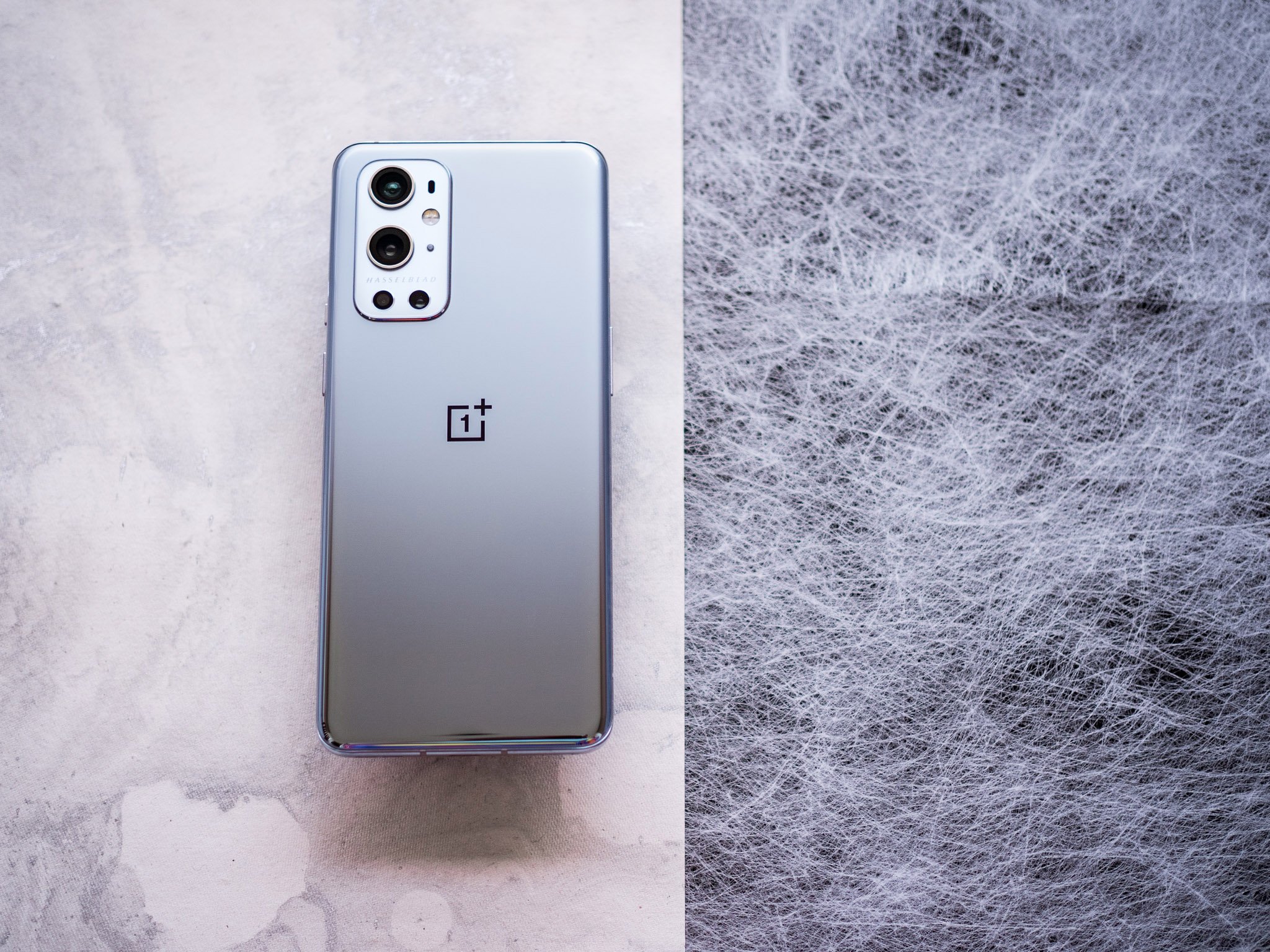
OnePlus' core tenet is delivering the best possible performance, and that hasn't changed in 2021. The OnePlus 9 Pro is powered by Qualcomm's latest 5nm Snapdragon 888, and it comes with 8GB of LPDDR5 RAM and 128GB of UFS 3.1 storage as standard.
| Specs | OnePlus 9 Pro |
|---|---|
| Software | OxygenOS 11, Android 11 |
| Display | 6.7" (3216x1440) 120Hz AMOLED |
| Chipset | 2.84GHz Snapdragon 888 |
| RAM | 8GB/12GB LPDDR5 |
| Storage | 128GB/256GB UFS 3.1 |
| Rear Camera 1 | 48MP IMX789 ƒ/1.8 (primary) |
| Rear Camera 2 | 50MP IMX766 ƒ/2.2 (wide-angle) |
| Rear Camera 3 | 8MP ƒ/2.4 (telephoto) |
| Rear Camera 4 | 2MP (monochrome) |
| Front Camera | 16MP IMX471 ƒ/2.4 |
| Connectivity | Wi-Fi 6, BT 5.2, NFC, AptX HD |
| Battery | 4500mAh | 65W, 50W wireless |
| Security | In-screen fingerprint |
| Colors | Morning Mist, Forest Green, Stellar Black |
| Dimensions | 163.2 x 73.6 x 8.7mm |
| Weight | 197g |
The Snapdragon 888 is a known quantity at this point, and the chipset delivers exciting performance gains over last year's Snapdragon 865. That's down to the new Cortex X1 core that goes up to 2.84GHz, and the chipset also has three Cortex A78 derivatives clocked at 2.42GHz, and four Cortex A55 cores at 1.80GHz.
The Adreno 660 GPU delivers up to 35% better performance in gaming over last year's Adreno 650. The result is that the OnePlus 9 Pro is an absolute delight to use for everything from scrolling through social media, browsing, and playing the best Android games. The phone handled everything I threw at it without breaking a sweat, and in the ten days I used it I didn't see any lag or slowdowns whatsoever. This is not a device that will slow down even after a few years' worth of use.
While the Qualcomm chipset in and of itself delivers massive gains, OnePlus is offering a few features to improve the thermal performance of the device. OnePlus Cool Play is a new addition that shifts the heat dissipation from the metal mid-frame to the glass front and back.
The reasoning is that you're likely to hold the mid-frame with your fingers when you're playing a game, so by siphoning the heat from the glass, the frame itself doesn't get too hot. The device also features a five-layer graphite sheet and a large vapor chamber for sustained gaming performance.
While that sounds great in theory, the OnePlus 9 Pro overheated when I was setting up the phone, and it got to a point where I wasn't able to launch the camera and the chipset automatically throttled to control the heat. Thankfully, this wasn't a problem following the initial setup, but the last time I ran into this particular issue was on a Sony Xperia Z five years ago.
One feature that OnePlus absolutely nailed this generation is the haptic engine. The vibration motor on the OnePlus 9 Pro is one of the best I've used on any phone, and it delivers granular feedback for gesture navigation and keyboard strikes. Like the OnePlus 8 Pro, the 9 Pro offers IP68 dust and water resistance. While the regular OnePlus 9 misses out on an official IP rating, OnePlus has revealed that the standard version is also waterproof — it just hasn't been certified. (The T-Mobile variant is IP68 certified, though, and will likely cost a bit more as a result.)
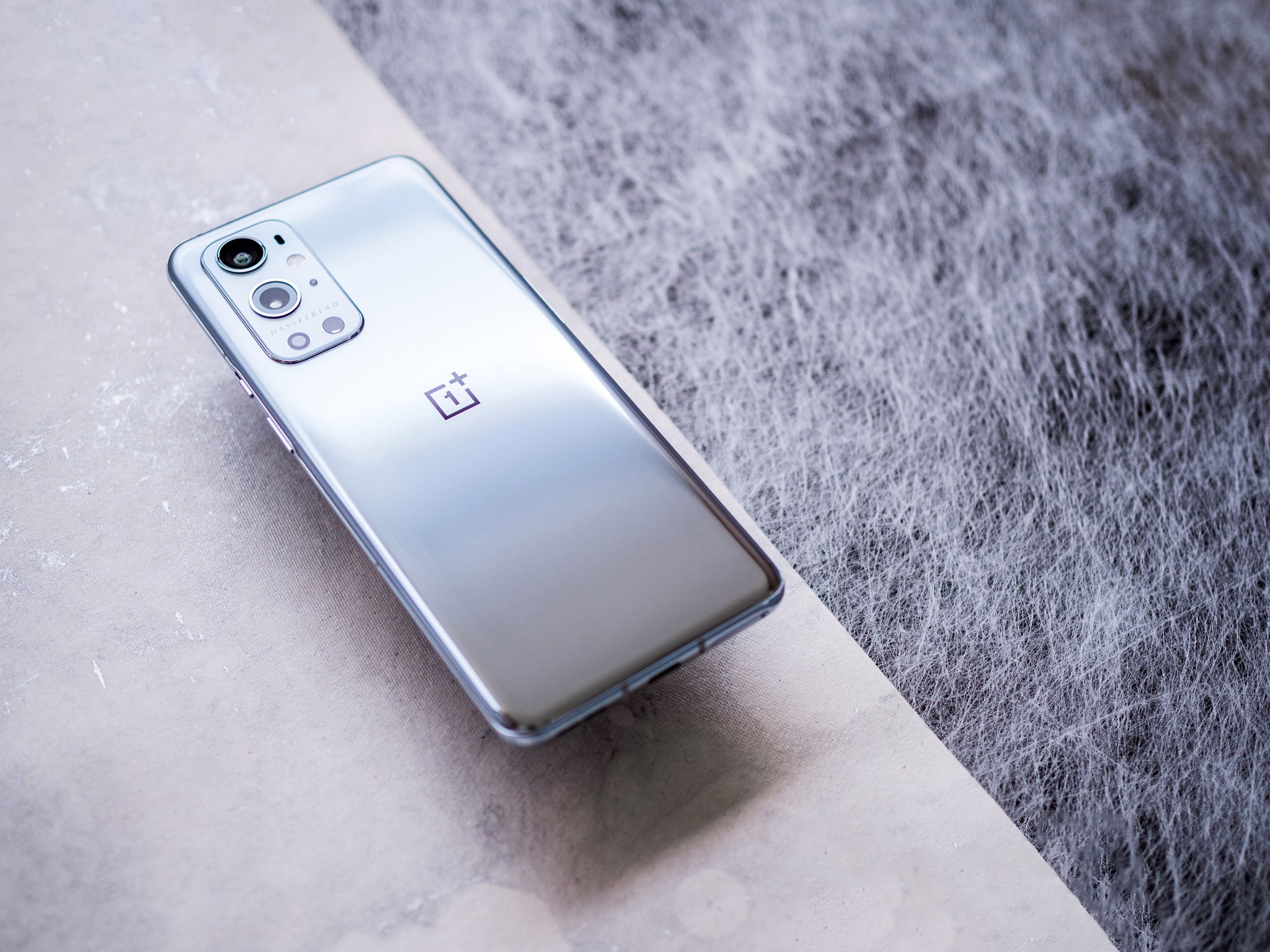
As for connectivity, the OnePlus 9 Pro has Wi-Fi 6, Bluetooth 5.2, NFC, and the AptX HD and LDAC audio codecs. I didn't face any issues with Wi-Fi connectivity; the phone consistently delivered bandwidth of over 500Mbit over Wi-Fi 6, and there were no issues with Bluetooth either. Like previous years, some variants come with dual-SIM connectivity as standard, though not the U.S. variants, and the device has Wi-Fi calling as well as VoLTE, with availability varying by carrier and region.
The main issue I have with the phone in terms of the hardware is the location of the fingerprint sensor. The optical module is fast to authenticate and reliable in daily use, but it sits far too low on the screen, making it awkward to access. I mostly relied on the software-based face unlock for authentication, and while it isn't as secure as the fingerprint sensor, it is incredibly fast.
The OnePlus 9 Pro has the requisite 5G bands for all U.S. carriers, but you'll only be able to use it on T-Mobile and Verizon.
Another quibble is around 5G connectivity. The OnePlus 9 Pro has Sub-6 and mmWave 5G connectivity in North America, making the device eligible for 5G on T-Mobile, AT&T, and Verizon. It has N1, 2, 3, 7, 25, 28, 41, 66, 71, 78 bands for Sub-6 and N258, 260, 261 over mmWave, but inexplicably, OnePlus is limiting 5G connectivity to two of the three major carriers.
The OnePlus 9 Pro will not work on AT&T's 5G network even though it has the requisite 5G bands. The phone will be available in both unlocked versions and a T-Mobile carrier edition, but even if you buy the unlocked model, you can only access 5G connectivity on T-Mobile and Verizon, which certified the phone on March 27. MVNOs that use T-Mobile 5G seem to work fine, however — my colleague Hayato Huseman was able to get his OnePlus 9 Pro registered on Google Fi and was able to access 5G connectivity.
This arbitrary limitation for AT&T makes the 9 Pro a difficult sell in the U.S., and I don't understand why OnePlus decided to intentionally hamper the usability of its latest flagship.
While the 9 Pro has mmWave bands, the current OnePlus 9 variants only offer Sub-6 5G, so for that particular phone to work on Verizon's mmWave 5G network, OnePlus will have to offer a new SKU — just like it did last year with the OnePlus 8 UW.
In Canada, where Sub-6 5G is proliferating, the OnePlus 9 Pro won't detect the burgeoning technology at all; it's not even in the firmware even though the hardware supports it. Other versions of the OnePlus 9 Pro are limited to Sub-6 5G connectivity, with the European model getting bands N1, 3, 5, 7, 8, 20, 28, 38, 40, 41, 66, 77, 78, and the Indian version getting just two: N41, 78. The Indian unit has 5G connectivity in name only, and with mainstream 5G service not slated to kick off for a few years, this is a moot point for now.
OnePlus 9 Pro, OnePlus 9 & OnePlus 9R Specifications
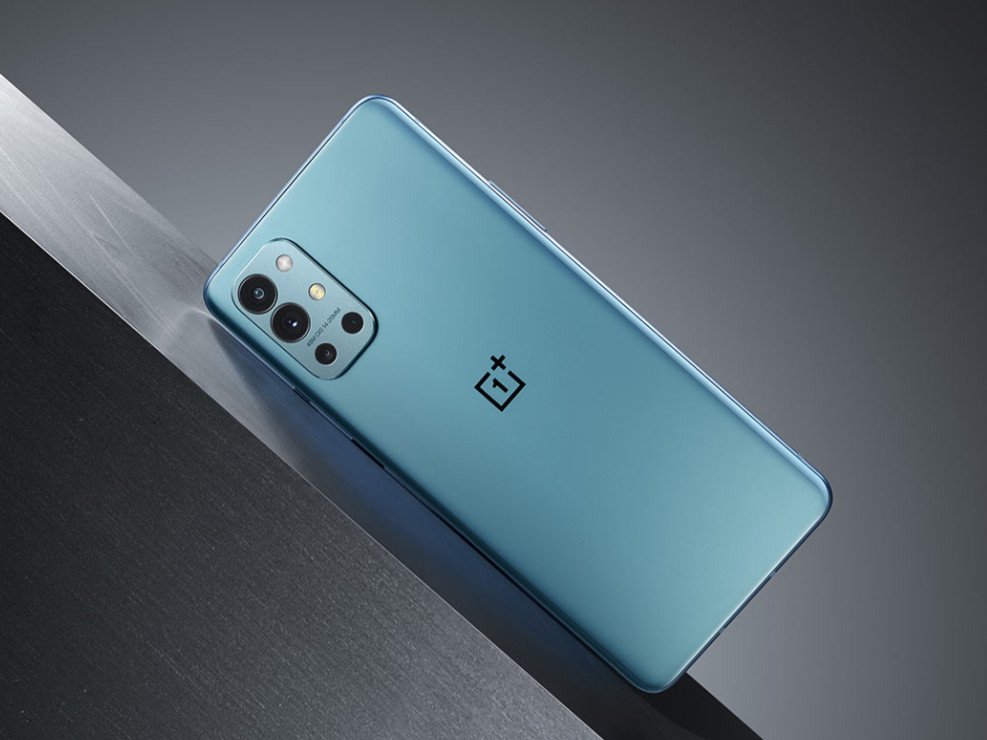
In addition to the OnePlus 9 and 9 Pro, there's a third device dubbed the OnePlus 9R that's coming to India and China.
I revealed earlier this year that the OnePlus 9R — which was then called the OnePlus 9 Lite internally — will be powered by a Snapdragon 865. That is indeed the case, but the chipset is labeled the Snapdragon 870 following Qualcomm's rebranding of its 2020 flagship platform.
The OnePlus 9R is an interesting option in the OnePlus 9 series; it has a 6.5-inch 120Hz LCD display and features the same 48MP Sony IMX586 camera as the OnePlus Nord along with a 16MP wide-angle lens, and it has the same 4500mAh battery as the rest of the OnePlus 9 models with 65W wired charging.
The phone has a polymer mid-frame, and it misses out on the Hasselblad branding, likely to save costs. Most of the hardware is identical to the last year's OnePlus 8, and the phone is available in India for ₹39,999 ($550) for the 8GB/128GB version, ₹5,000 ($70) less than the starting variant of the OnePlus 9.
Here's the full details on the OnePlus 9 series:
| OnePlus 9 | OnePlus 9 Pro | OnePlus 9R | |
|---|---|---|---|
| Operating system | Android 11 OxygenOS 11 | Android 11 OxygenOS 11 | Android 11 OxygenOS 11 |
| Display | 6.5-inch 120Hz AMOLED 2400x1080 (20:9) Gorilla Glass 5 | 6.7-inch 120Hz LTPO AMOLED 3216x1440 (20.1:9) Dual curved screen Gorilla Glass 5 | 6.5-inch 120Hz Fluid Display 2400x1080 (20:9) Gorilla Glass 5 |
| Chipset | Snapdragon 888 1 x 2.84GHz Cortex X1 3 x 2.42GHz Cortex A78 4 x 1.80GHz Cortex A55 5nm | Snapdragon 888 1 x 2.84GHz Cortex X1 3 x 2.42GHz Cortex A78 4 x 1.80GHz Cortex A55 5nm | Snapdragon 870 1 x 2.84GHz Cortex A77 3 x 2.42GHz Cortex A77 4 x 1.80GHz Cortex A55 7nm |
| GPU | Adreno 660 | Adreno 660 | Adreno 650 |
| RAM | 8GB/12GB LPDDR5 | 8GB/12GB LPDDR5 | 8GB/12GB LPDDR4X |
| Storage | 128GB/256GB UFS3.1 | 128GB/256GB UFS3.1 | 128GB/256GB UFS3.1 |
| MicroSD slot | ❌ | ❌ | ❌ |
| Rear camera 1 | 48MP Sony IMX689 f/1.8, 1.12um, EIS 8K at 30fps, 4K at 60fps Hasselblad Camera for Mobile | 48MP Sony IMX789 f/1.8, 1.12um, OIS, EIS 8K at 30fps, 4K at 120fps Hasselblad Camera for Mobile | 48MP Sony IMX586 f/1.7, 0.8um, OIS, EIS 4K at 60fps Hasselblad Camera for Mobile |
| Rear camera 2 | 50MP Sony IMX766 (wide-angle) f/2.2, freeform lens 4K at 60fps | 50MP Sony IMX766 (wide-angle) f/2.2, freeform lens 4K at 60fps | 16MP (wide-angle) 11/04/2021 07:34 PM Weekend poll - Which dead Google app or service do you miss the most11/04/2021 05:31 PM Budget Samsung Galaxy Z Fold Lite may not arrive this year11/04/2021 04:05 PM Act fast - Claim 3 free months of Stadia Pro, no purchase necessary11/04/2021 07:05 PM Be ready for emergencies with the Anker Roav jump starter pro down to $7011/04/2021 01:14 PM Razer Blade 15 review - RTX, right here, right now11/04/2021 05:00 PM Google allegedly gave its ad system an advantage with a special project11/04/2021 10:20 PM The first renders of the upcoming Galaxy S21 FE reveal a familiar design11/04/2021 12:06 AM Find lost items anywhere with these tiny Bluetooth trackers11/04/2021 04:55 PM
2014 © US apps and news |






